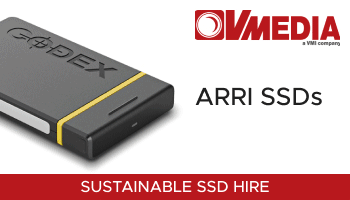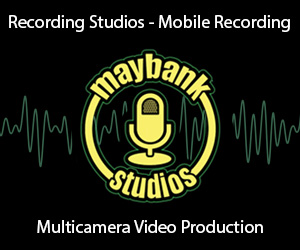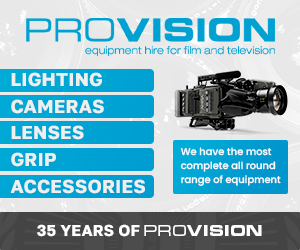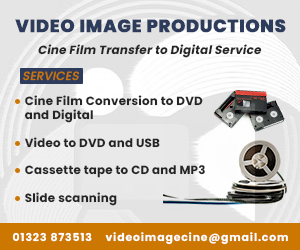Broadcast News
27/03/2013
Archiving: How To Save Our Digital Assets

Historically, film companies stored finished movies on film and kept them in a secure, temperature-controlled warehouse. This was fine in the analogue age, but today, in the digital age, all that information still needs to be stored securely, yet remain easily accessible - says Ray Quattromini, MD, Fortuna Power Systems...
The issue with storing digital data is that we now create more information with better effects, greater clarity and definition than ever before - and this consumes vast amounts of disk space. Where we put the finished movie/advert/corporate video and the extra footage, once the editing is finished, is a challenge that grows daily.
LTO (Linear Tape Open) came along about 15 years ago and marked the first time a whole movie could be stored on tape securely. Today, we have LTO-6 storing 2.5TBs native. The issue with storing data on LTO is you will always be playing catch-up.
- LTO can only read the previous two generations of data
- You will require the application that wrote the tape to be able to read it back, unless it was written in a non-proprietary format
- It can be slow to bring back, if required urgently
LTFS (Linear Tape File System) – Based on LTO, this could solve many issues associated with using an LTO archive solution. Designed by IBM and now adopted as a standard, LTFS (from LTO-5 onwards) generates tapes that appear as a big USB key to the operating system. In order to read an LTFS generated tape, all you need is an LTO-5 or LTO-6 tape drive attached to a Windows, Linux or Apple system. There are some very clever LTFS archiving solutions whereby the data is initially written to NAS, and attached to this is a tape library which can store 100s of TBs of data. When you move to LTO “x”, you just attach your new library and the system automatically migrates the data. But as it is doing so, it checks the existing tape’s data integrity and ensures your archive is 100% intact.
Hard Disk – Capacities today are 4TB, and to store 500TBs in 8U costs approximately £50,000. The systems have MAID (Massive Array Idle Disks) which means they power down when not required. Access is instant and they support all RAID levels. I know of many companies using USB-attached drives to store digital data, and these are not enterprise-grade drives, or even designed for this purpose. Disks do cost more than tape, but in order to read a tape you need a drive.
Cloud – This is the new kid on the block, but comes at a price. While it is great to have your archive available 24/7 and with global access, should you really archive old footage in the Cloud? Shouldn’t you use the Cloud to access the job you are working on now and allow access?
Cloud companies make money in the following ways:
- Every GB you store based on an agreed amount you are going to upload
- A monthly charge to store your data
- An additional charge if you want it in two locations
- A charge to download your data
In addition to this, there are many legal aspects that are not considered:
- How easy is it to get your data back if the company goes bust?
- Who has the legal right to the data if a dispute arises?
- What SLA is in place?
- How can you check that your data is not de-duplicated?
- How can you check that your data is not interleaved with other customers’ on tape?
Blu-ray – Unlike the other technologies shown, Blu-ray, while poor in capacity at 100GB, is designed to have a 50 year archive life. With Blu-ray you do not need any special software to read a BD disk if it was created in UDF 2.0, and it can easily be duplicated if required. Ideally, Blu-ray should be used for your digital master, taking more than one copy and storing your TBs on one of the above technologies.
Summary
The answer to storing many TBs of data is a big challenge. You want to avoid proprietary vendor lock whereby your data resides on systems, as you have no way of getting information back if the company goes bust. You also need to archive it on reliable storage that is going to last. As far as I am concerned, USB-attached storage is not an archive. Ideally, you should try and do the following:
- Make a minimum of two copies
- Store the data on two different media types i.e. LTO and hard disk
- Periodically check your data is still intact and hasn’t degraded
- Avoid data interleaving and de-duplication
- Every 5 years assess the market to look at the alternatives by carrying out a technology refresh.
- Keep the data in its original format
- Do not rely on incumbent suppliers for advice
By Ray Quattromini, MD Fortuna Power Systems Ltd.
Ray has spent over 30 years in the data storage industry working for manufacturers, distributors, resellers and now runs his own data storage business. He speaks daily with companies on how best to solve data storage requirements.
Read the article in the online edition of Regional Film & Video here.
The issue with storing digital data is that we now create more information with better effects, greater clarity and definition than ever before - and this consumes vast amounts of disk space. Where we put the finished movie/advert/corporate video and the extra footage, once the editing is finished, is a challenge that grows daily.
LTO (Linear Tape Open) came along about 15 years ago and marked the first time a whole movie could be stored on tape securely. Today, we have LTO-6 storing 2.5TBs native. The issue with storing data on LTO is you will always be playing catch-up.
- LTO can only read the previous two generations of data
- You will require the application that wrote the tape to be able to read it back, unless it was written in a non-proprietary format
- It can be slow to bring back, if required urgently
LTFS (Linear Tape File System) – Based on LTO, this could solve many issues associated with using an LTO archive solution. Designed by IBM and now adopted as a standard, LTFS (from LTO-5 onwards) generates tapes that appear as a big USB key to the operating system. In order to read an LTFS generated tape, all you need is an LTO-5 or LTO-6 tape drive attached to a Windows, Linux or Apple system. There are some very clever LTFS archiving solutions whereby the data is initially written to NAS, and attached to this is a tape library which can store 100s of TBs of data. When you move to LTO “x”, you just attach your new library and the system automatically migrates the data. But as it is doing so, it checks the existing tape’s data integrity and ensures your archive is 100% intact.
Hard Disk – Capacities today are 4TB, and to store 500TBs in 8U costs approximately £50,000. The systems have MAID (Massive Array Idle Disks) which means they power down when not required. Access is instant and they support all RAID levels. I know of many companies using USB-attached drives to store digital data, and these are not enterprise-grade drives, or even designed for this purpose. Disks do cost more than tape, but in order to read a tape you need a drive.
Cloud – This is the new kid on the block, but comes at a price. While it is great to have your archive available 24/7 and with global access, should you really archive old footage in the Cloud? Shouldn’t you use the Cloud to access the job you are working on now and allow access?
Cloud companies make money in the following ways:
- Every GB you store based on an agreed amount you are going to upload
- A monthly charge to store your data
- An additional charge if you want it in two locations
- A charge to download your data
In addition to this, there are many legal aspects that are not considered:
- How easy is it to get your data back if the company goes bust?
- Who has the legal right to the data if a dispute arises?
- What SLA is in place?
- How can you check that your data is not de-duplicated?
- How can you check that your data is not interleaved with other customers’ on tape?
Blu-ray – Unlike the other technologies shown, Blu-ray, while poor in capacity at 100GB, is designed to have a 50 year archive life. With Blu-ray you do not need any special software to read a BD disk if it was created in UDF 2.0, and it can easily be duplicated if required. Ideally, Blu-ray should be used for your digital master, taking more than one copy and storing your TBs on one of the above technologies.
Summary
The answer to storing many TBs of data is a big challenge. You want to avoid proprietary vendor lock whereby your data resides on systems, as you have no way of getting information back if the company goes bust. You also need to archive it on reliable storage that is going to last. As far as I am concerned, USB-attached storage is not an archive. Ideally, you should try and do the following:
- Make a minimum of two copies
- Store the data on two different media types i.e. LTO and hard disk
- Periodically check your data is still intact and hasn’t degraded
- Avoid data interleaving and de-duplication
- Every 5 years assess the market to look at the alternatives by carrying out a technology refresh.
- Keep the data in its original format
- Do not rely on incumbent suppliers for advice
By Ray Quattromini, MD Fortuna Power Systems Ltd.
Ray has spent over 30 years in the data storage industry working for manufacturers, distributors, resellers and now runs his own data storage business. He speaks daily with companies on how best to solve data storage requirements.
Read the article in the online edition of Regional Film & Video here.
Top Related Stories
Click here for the latest broadcast news stories.
12/11/2019
LTO Ultrium Tape…A Breakthrough Product In Data Storage
PMD Magnetics is one of the longest standing suppliers of LTO tape media in Europe, starting the business back in 1977. Managing Director, Geoff Dance
LTO Ultrium Tape…A Breakthrough Product In Data Storage
PMD Magnetics is one of the longest standing suppliers of LTO tape media in Europe, starting the business back in 1977. Managing Director, Geoff Dance
04/12/2008
Front Porch Digital Launches All-In-One Product For Migrating Content From Videotape To Data Tape
Front Porch Digital, a leader in content storage management for media operations worldwide, has launched DIVAsolo, the world's first all-in-one path f
Front Porch Digital Launches All-In-One Product For Migrating Content From Videotape To Data Tape
Front Porch Digital, a leader in content storage management for media operations worldwide, has launched DIVAsolo, the world's first all-in-one path f
16/07/2012
Crossroads Systems StrongBox Enterprise LTFS NAS
The Crossroads StrongBox is available from Fortuna PS is an online all-the-time, non-proprietary and fully portable data vault for long-term data rete
Crossroads Systems StrongBox Enterprise LTFS NAS
The Crossroads StrongBox is available from Fortuna PS is an online all-the-time, non-proprietary and fully portable data vault for long-term data rete
12/12/2017
Broadcasters & Post Production Facilities Digitising Legacy Tape Formats: Pt 4
The fourth in a series of articles by Pat Horridge of VET Training covering the issues facing broadcasters & post houses needing to digitise legacy ta
Broadcasters & Post Production Facilities Digitising Legacy Tape Formats: Pt 4
The fourth in a series of articles by Pat Horridge of VET Training covering the issues facing broadcasters & post houses needing to digitise legacy ta
10/11/2016
Best Practice For Avoiding Data Loss
We all know the importance of the data and footage we shoot, either for yourself or for that important client, writes Barry Bassett, VMI, and Grant Wo
Best Practice For Avoiding Data Loss
We all know the importance of the data and footage we shoot, either for yourself or for that important client, writes Barry Bassett, VMI, and Grant Wo
16/02/2017
In-House Big Data Archiving Is The Future
As rates of data creation accelerate exponentially, effective solutions to data archiving become not just urgent, but mandatory, writes Alan Hoggarth,
In-House Big Data Archiving Is The Future
As rates of data creation accelerate exponentially, effective solutions to data archiving become not just urgent, but mandatory, writes Alan Hoggarth,
10/11/2014
Image Store: Looking At Long-Term Data Archiving
If you are storing data on hard disks for the long-term, you WILL lose data. You need a Plan B. In this article we look at LTO tape which is low cost,
Image Store: Looking At Long-Term Data Archiving
If you are storing data on hard disks for the long-term, you WILL lose data. You need a Plan B. In this article we look at LTO tape which is low cost,
09/07/2010
Boxer To Resell Atempo Data Protection And Archiving Solutions
A leading provider of cross-platform data protection and archiving solutions, Atempo, has signed Boxer Systems to resell Atempo Digital Archive (ADA)
Boxer To Resell Atempo Data Protection And Archiving Solutions
A leading provider of cross-platform data protection and archiving solutions, Atempo, has signed Boxer Systems to resell Atempo Digital Archive (ADA)
19/10/2022
Cobalt Iron's Free Data Protection Maturity Assessment Now Available
Cobalt Iron Inc. has announced the availability of its free Data Protection Maturity Assessment created in partnership with independent data center an
Cobalt Iron's Free Data Protection Maturity Assessment Now Available
Cobalt Iron Inc. has announced the availability of its free Data Protection Maturity Assessment created in partnership with independent data center an
04/12/2017
Broadcasters & Post Production Facilities Digitising Legacy Tape Formats: Pt 3
Broadcasters & Post Production Facilities Digitising Legacy Tape Formats The third in a series of articles by Pat Horridge of VET Training covering th
Broadcasters & Post Production Facilities Digitising Legacy Tape Formats: Pt 3
Broadcasters & Post Production Facilities Digitising Legacy Tape Formats The third in a series of articles by Pat Horridge of VET Training covering th
14/04/2023
Cobalt Iron Updates Compass® Enterprise SaaS Backup Platform
Cobalt Iron has updated its Compass® enterprise SaaS backup platform with new data governance capabilities comprising policy-based controls and an app
Cobalt Iron Updates Compass® Enterprise SaaS Backup Platform
Cobalt Iron has updated its Compass® enterprise SaaS backup platform with new data governance capabilities comprising policy-based controls and an app
15/06/2023
Cobalt Iron Receives Patent On Its Policy-Driven Data Cyber Inspection Policy
Cobalt Iron Inc. has received a patent on its adaptive, policy-driven data cyber inspection technology. U.S. patent 11663362, granted on 30 May, intro
Cobalt Iron Receives Patent On Its Policy-Driven Data Cyber Inspection Policy
Cobalt Iron Inc. has received a patent on its adaptive, policy-driven data cyber inspection technology. U.S. patent 11663362, granted on 30 May, intro
04/08/2023
Cobalt Iron Announces Compass Migrator™ Is Now Available
Cobalt Iron has announced the availability of Compass Migrator™, a new capability of the Cobalt Iron Compass® enterprise SaaS backup platform. Large e
Cobalt Iron Announces Compass Migrator™ Is Now Available
Cobalt Iron has announced the availability of Compass Migrator™, a new capability of the Cobalt Iron Compass® enterprise SaaS backup platform. Large e
28/03/2019
Bannister Lake To Embrace NDI® Workflow
Bannister Lake is to embrace the NDI® workflow with its powerful Chameleon data aggregation solution. For producers working within the NDI ecosystem,
Bannister Lake To Embrace NDI® Workflow
Bannister Lake is to embrace the NDI® workflow with its powerful Chameleon data aggregation solution. For producers working within the NDI ecosystem,
14/11/2006
Rohde & Schwarz's DVB-H Proving To Be A Cost Effective Way Of Broadcasting
Rohde & Schwarz’s DVB-H playout with statistical multiplex for playout centers provides operators with increased capacities and allows them to broadca
Rohde & Schwarz's DVB-H Proving To Be A Cost Effective Way Of Broadcasting
Rohde & Schwarz’s DVB-H playout with statistical multiplex for playout centers provides operators with increased capacities and allows them to broadca















